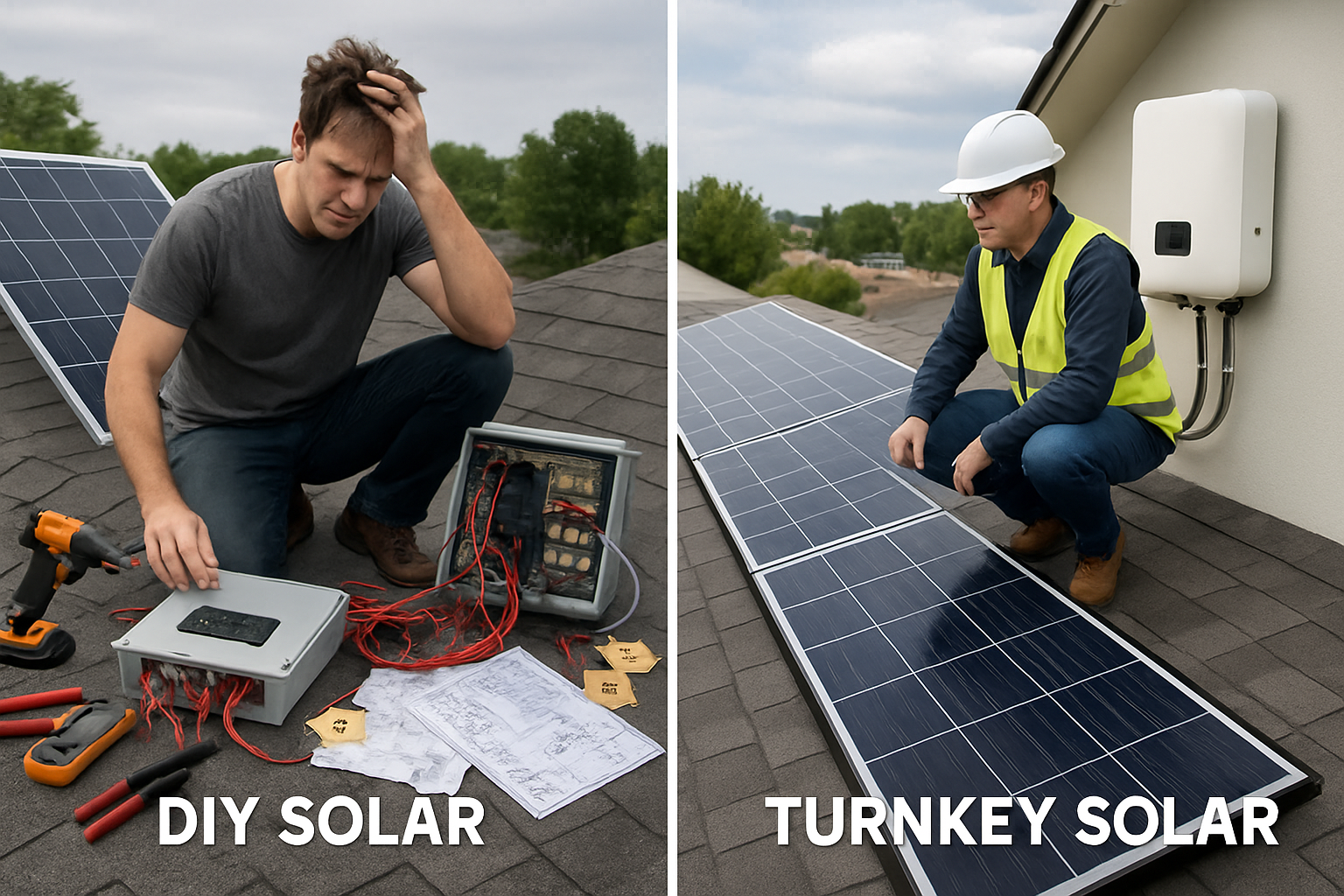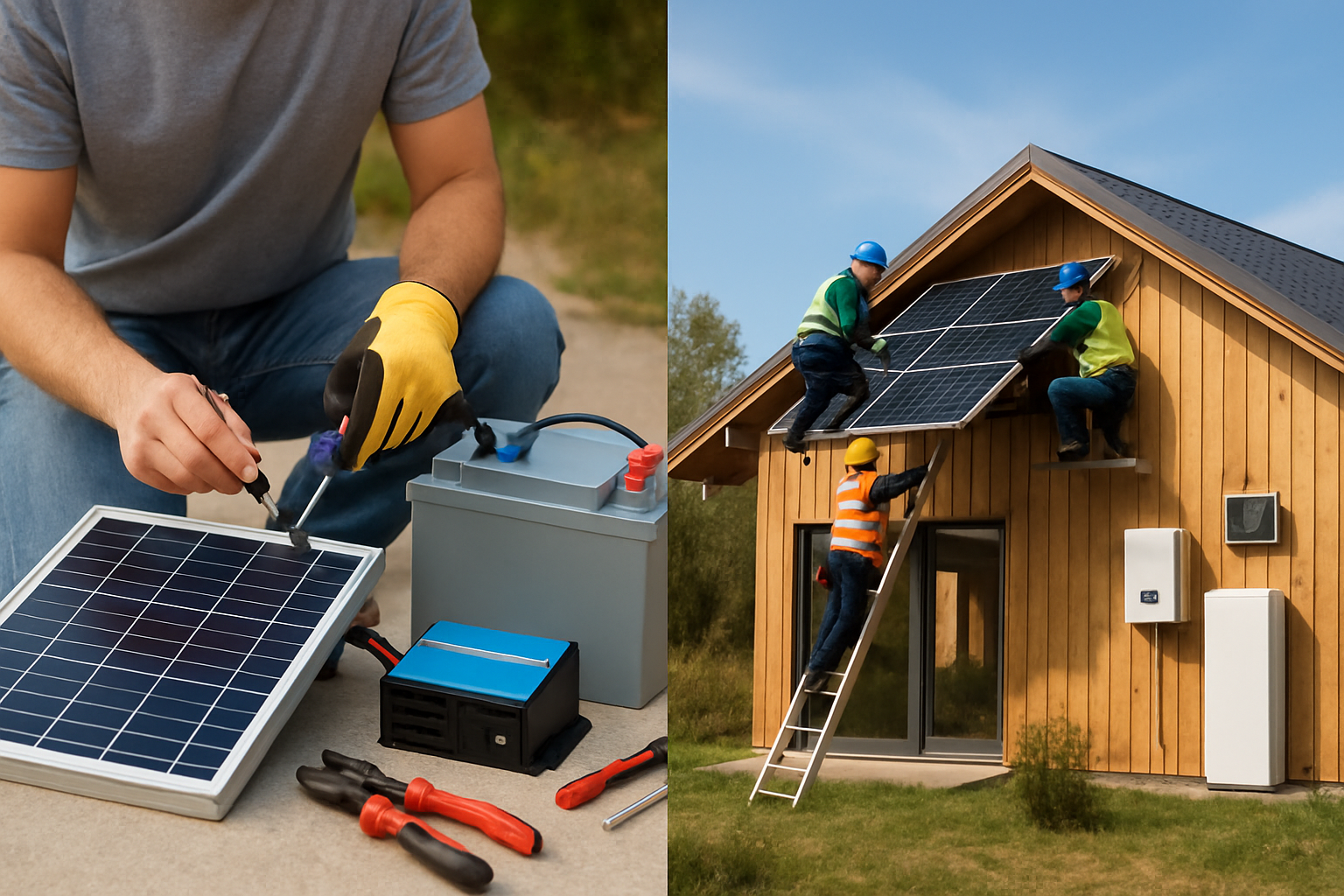Introduction: Powering Your Cabin with Energy Storage
Imagine your cabin, nestled away, powered by clean, reliable energy. Energy storage systems (ESS) make this vision a reality, offering independence from the grid. For many cabin owners, the question arises: should you build your own system or opt for a professionally installed package?
The Appeal of Off-Grid Living for Cabins
Off-grid living offers freedom and a reduced environmental footprint. For cabins, this often means relying on generators or limited grid access. An ESS, paired with solar panels, provides a sustainable power source, enhancing comfort and reducing operational costs.
Understanding Energy Storage System Choices
Choosing an ESS involves more than just selecting components. You face a fundamental decision: the hands-on approach of a DIY build or the comprehensive service of an installer package. Each path presents distinct financial implications and levels of effort.

The DIY Cabin ESS Approach: Costs and Considerations
Building your own cabin ESS can seem appealing due to perceived cost savings. This path requires significant personal investment in time, research, and labor.
Component Sourcing and Initial Investment
A DIY build begins with sourcing individual components. You will select high-performance, safe, and reliable LiFePO4 batteries, a suitable solar inverter to convert direct current to alternating current, and solar panels. Direct purchasing can sometimes offer lower prices for individual parts compared to retail packages. However, this also means you are responsible for researching compatibility and ensuring quality from various suppliers.
Hidden Costs and Time Investment
Beyond the primary components, a DIY project often incurs several hidden costs. These include specialized tools for wiring, mounting, and testing, which you might need to purchase or rent. Permitting and inspection fees, though sometimes overlooked, are crucial for safety and compliance. Most significantly, your time represents a substantial investment. Researching, designing, troubleshooting, and installing the system demands many hours, which has an inherent value.
Technical Challenges and Learning Curve
Successfully installing an ESS requires a solid understanding of electrical systems, safety protocols, and component integration. The learning curve can be steep, especially for complex hybrid inverter setups or battery management systems. Improper installation can lead to inefficiencies, system failures, or even safety hazards. As the IEA highlights in 'Getting Wind and Solar onto the Grid', skilled human labor is important for successful installation, avoiding hardware failures and cost overruns.
Installer Package ESS: Convenience and Professionalism
Opting for an installer package provides a turnkey solution, where professionals handle every aspect of your cabin's energy storage system.
Comprehensive Solutions and Upfront Pricing
Installer packages typically include all necessary components—LiFePO4 batteries, solar panels, and solar inverters—along with design, installation, and commissioning services. The pricing is usually transparent and covers the entire project, simplifying budgeting. You receive a fully integrated home energy storage system tailored to your cabin's specific energy needs.
Warranty, Support, and Expertise
Professional installers offer warranties on both components and labor, providing peace of mind. Should any issues arise, you have a single point of contact for support and maintenance. Their expertise ensures the system is designed and installed to optimal performance and safety standards. The IEA's 'System Integration of Renewables' report notes that the availability of locally adapted technology and human resources, along with appropriate standards, is relevant for grid integration, a principle that extends to robust off-grid installations.
Long-Term Reliability and Performance Guarantees
A professionally installed system often translates to greater long-term reliability and efficiency. Experts ensure proper sizing, wiring, and configuration, minimizing the risk of premature component failure and maximizing energy harvest. This reliability contributes significantly to the system's overall return on investment.
ROI Analysis: A Cabin ESS Case Study
To illustrate the financial differences, let's consider a hypothetical cabin requiring an average of 5 kWh per day, with peak usage of 2 kW. We will compare a DIY build against an installer package for a system featuring a 5 kW hybrid inverter, a 10 kWh LiFePO4 battery bank, and 2 kW of solar panels.
Scenario Setup: A Sample Cabin System
Our sample cabin is located in a sunny region, allowing for good solar generation. The goal is to eliminate reliance on a noisy, fuel-dependent generator, saving on fuel costs and maintenance.
Cost Breakdown: DIY vs. Installer Package
Below is a simplified cost comparison. Prices are illustrative and can vary based on location, component choices, and market conditions.
| Cost Category | DIY Build (Estimated) | Installer Package (Estimated) |
|---|---|---|
| LiFePO4 Batteries (10 kWh) | $4,000 | $4,500 |
| Solar Inverter (5 kW Hybrid) | $2,500 | $2,800 |
| Solar Panels (2 kW) | $1,000 | $1,200 |
| Mounting Hardware & Wiring | $800 | $1,000 |
| Tools & Safety Gear | $500 | $0 (Included) |
| Permits & Inspections | $300 | $500 (Handled by installer) |
| Labor (Your Time vs. Professional) | Valued at $2,000 (200 hours @ $10/hr) | $4,000 |
| Contingency (10%) | $910 | $1,400 |
| Total Initial Investment | $12,010 | $15,400 |
Calculating Payback Period and Lifetime Savings
Let's assume the cabin previously relied on a gasoline generator for 4 hours a day, consuming 0.5 gallons/hour at $4/gallon, totaling $8/day or $2,920 annually. This annual saving forms the basis of our ROI.
- DIY System Payback: $12,010 / $2,920 ≈ 4.1 years
- Installer Package Payback: $15,400 / $2,920 ≈ 5.3 years
While the DIY system shows a quicker payback, this calculation does not fully account for potential differences in system longevity, maintenance, or efficiency. A professionally installed system, with its robust design and warranty, might experience fewer failures and maintain higher efficiency over its 15-20 year lifespan, potentially leading to greater lifetime savings despite a longer initial payback period. Conversely, a DIY system might incur higher maintenance or repair costs if components fail or if troubleshooting requires professional help. The IEA's 'The Power of Transformation' report underscores the importance of assessing the cost-benefit profile of different flexibility options, a principle that extends to evaluating the long-term value of an ESS.
Making Your Decision: Balancing Cost, Time, and Expertise
The choice between a DIY build and an installer package depends on your unique circumstances and priorities. There is no universally correct answer.
Assessing Your Skills and Resources
Honestly evaluate your technical skills, available time, and comfort level with electrical work. If you possess a strong technical background and enjoy hands-on projects, DIY might be a rewarding path. If your time is limited or your technical expertise is low, the perceived initial savings of DIY might be overshadowed by frustration, delays, and potential errors.
The Value of Peace of Mind
An installer package offers convenience, professional assurance, and ongoing support. This peace of mind can be a significant factor, especially for a remote cabin where reliable power is paramount. The initial higher cost can be seen as an investment in reliability, safety, and expert-backed performance.
Your Path to Energy Independence
Whether you choose to build your cabin's energy storage system yourself or have it professionally installed, the ultimate goal is reliable energy independence. Both paths offer distinct advantages and challenges. Carefully consider the financial implications, your personal capabilities, and the long-term value each option provides. By weighing these factors, you will make an informed decision that powers your cabin efficiently and sustainably for years to come.
Frequently Asked Questions
How long does a cabin ESS typically last?
A well-maintained cabin energy storage system, particularly one utilizing LiFePO4 batteries, can last 10 to 15 years or more. Solar panels often come with 25-year performance warranties. The lifespan depends on component quality, installation accuracy, usage patterns, and maintenance practices.
What are the key safety considerations for a DIY ESS?
Safety is paramount for a DIY ESS. Key considerations include proper wiring, grounding, overcurrent protection, and ventilation for batteries. Always follow manufacturer guidelines and local electrical codes. High-voltage DC systems can be dangerous, so wear appropriate personal protective equipment and consult with a qualified electrician if you are uncertain about any step.
Can I expand my ESS later?
Yes, many energy storage systems are designed with modularity in mind, allowing for future expansion. When planning your initial system, consider future energy needs and choose components (like inverters) that can accommodate additional battery capacity or solar panels. Discussing potential expansion with an installer or planning for it in your DIY design can save costs and effort later.
References
- IEA. (2017). Getting Wind and Solar onto the Grid.
- IEA. (2018). System Integration of Renewables.
- IEA. (2014). The Power of Transformation.





Leave a comment
All comments are moderated before being published.
This site is protected by hCaptcha and the hCaptcha Privacy Policy and Terms of Service apply.